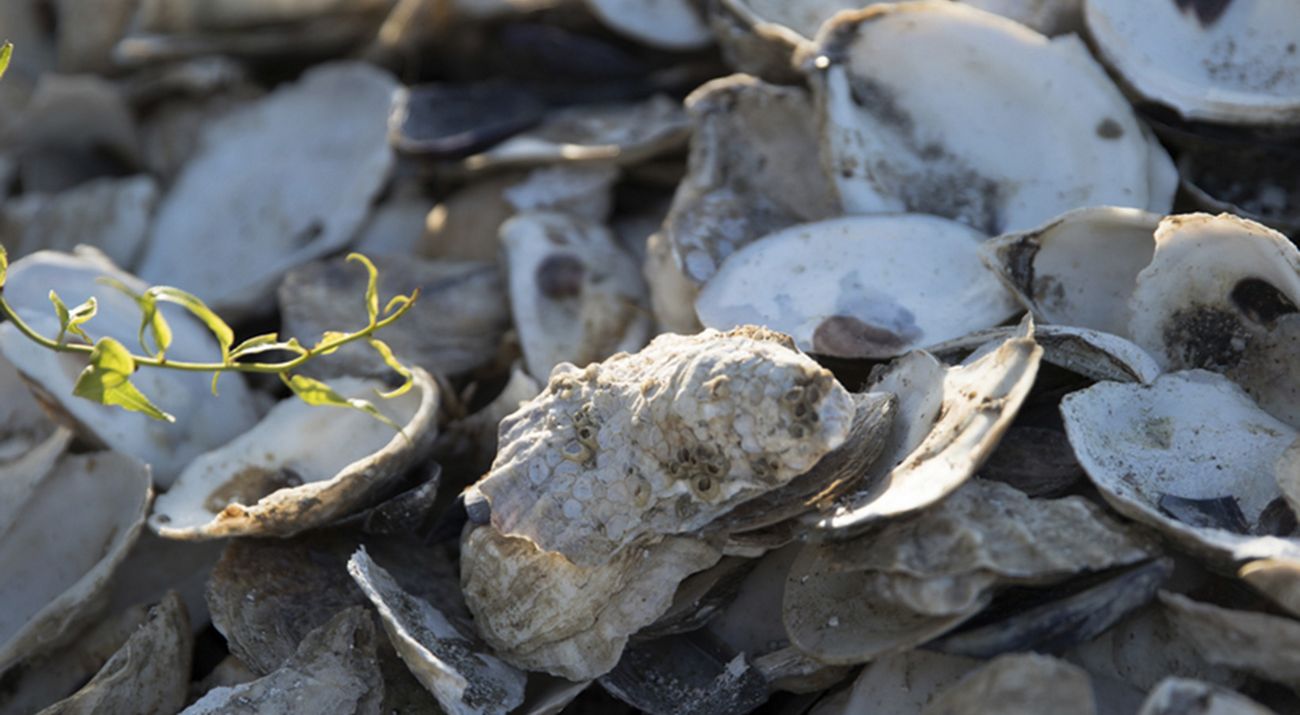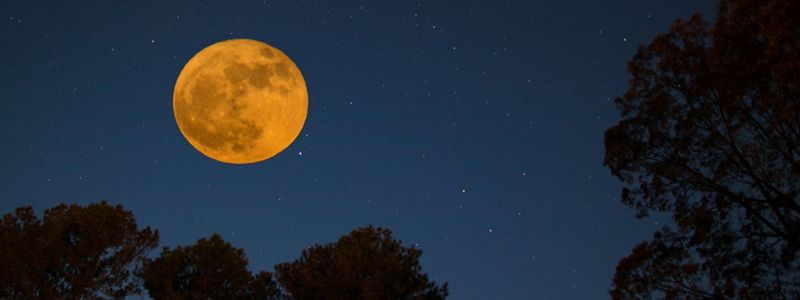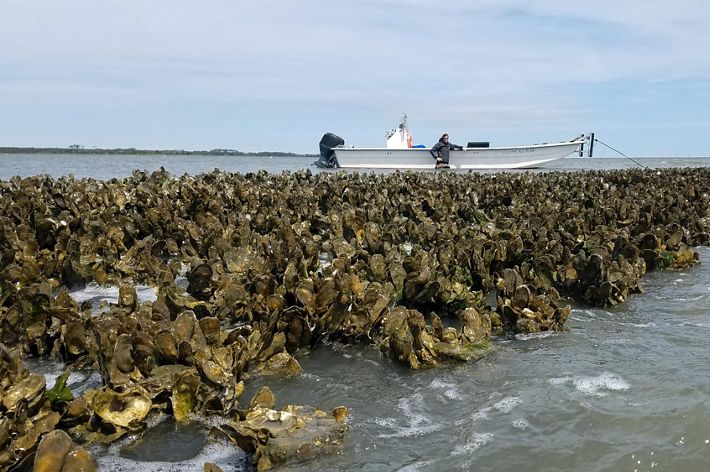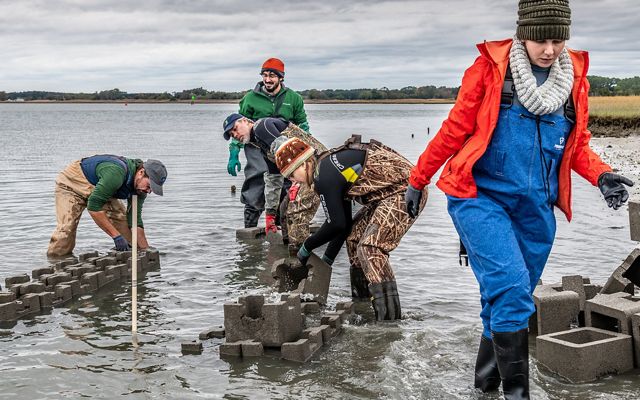Oyster Restoration in Virginia
Restoring a vital natural and economic resource to Virginia waters.

Oysters are an iconic species in Virginia. Sailing up the Chesapeake Bay from Jamestown, Captain John Smith wrote that they “lay as thick as stones” in the water. For generations, oysters have played an important role in the Bay’s economy as a food that locals, tourists and the global market love.
In fact, it’s possible they have been loved to death.
Oyster restoration has long been a priority for TNC. Working with partners, our efforts aim to turn the tide of overharvest, pollution and disease that has decimated oyster populations over the last hundred years.
Dramatic changes in the public policy arena, coupled with emerging scientific understanding and the creation of large-scale oyster sanctuaries, are providing a clear path forward to restore this keystone species.
And we’re just getting started.
The Science of Restoration
Oysters filter sediment and algae and remove nitrogen and phosphorus—harmful pollutants in excess—from the water, while their reefs provide nurseries and feeding grounds for rockfish, crabs and other commercially and recreationally important species.
Oyster reef restoration also offers a nature-based solution for adapting to climate change. Reefs can take the punch out of storm waves and help slow the rate of erosion along marsh edges. As they grow, oyster reefs accrete vertically, keeping pace with sea level rise and increasing their capacity for storm protection.
The Eastern Shore's unique expanse of Atlantic coastal wilderness offers unparalleled opportunities to study how local communities can benefit from intact natural systems, and the advantages of restoring coastal habitat.
Pearls of Hope
Restored oyster reefs match multiple functions of natural reefs within a decade.
Study ResultsIn April 2022, researchers from the University of Virginia, working in partnership with TNC, published the results of a 15-year study that offers hope for the bivalve's future. Looking at 16 sites composed of 70 reefs, the study demonstrates that restored reefs can match natural reef oyster populations in about six years and continue to hold strong thereafter. The study also concludes that the ecosystem benefits that restored reefs provide can catch up within a decade—meaning cleaner and clearer water as well as habitat that supports coastal fisheries.
What makes for a successful oyster reef? And where is the sweet spot for oysters to survive and thrive? These are questions being addressed in another study conducted by Virginia SeaGrant and UVA Ph.D. candidate Kinsey Tedford.
Working with TNC Coastal Scientist Bo Lusk, Kinsey is monitoring 18 oyster reefs at the Volgenau Virginia Coast Reserve, taking detailed measurements for elevation, oyster growth and reef structure, to see what conditions are most important to optimize reef survival and growth. The results of this study will help inform TNC's long-term restoration efforts.
Building Oyster Reefs
TNC deploys a variety of oyster reef restoration techniques. Floating cranes and high pressure water hoses can be used in river tributaries to place chunks of granite or clean concrete at a reef site.
In the shallow coastal bays of the Eastern Shore we rely on human power (often provided by dedicated volunteers) and lightweight oyster catcher substrate made from cement and burlap fabric or concrete castle blocks. Fitting the interlocking blocks together may look like child’s play, but each piece weighs 30 pounds! The castle blocks are placed in uniform arrays that provide a foundation on which juvenile oysters can attach and build.
Piankatank Progress and Success
In the Chesapeake Bay, TNC and partners, including the Army Corps of Engineers, Virginia Marine Resources Commission (VMRC) and NOAA, have been working together in an aggressive and concerted effort to restore oyster reefs in 10 bay tributaries by 2025.
Virginia marked a major milestone in 2021, achieving restoration goals set for the Piankatank River. In 2020, TNC contributed to the construction of 40 acres of reef in the river, bringing the total to 146 acres planted on more than 15 reefs since 2014. In 2021, VMRC constructed over 60 acres of new reef, with the Army Corps of Engineers slated to add 50 acres in 2022—expanding the world-record reefs in the Piankatank to almost 500 acres.
What does that number represent? An area bigger than the National Mall in Washington, D.C., and representing the largest oyster restoration project in the world.
TNC has invested nearly $1 million into this decade-long restoration effort in the Piankatank, leveraging nearly five times that amount from our partners and surpassing the shared goals we set out to achieve for oyster restoration in this key tributary of the Chesapeake Bay.
Reefs have been constructed using clean, crushed concrete or granite. High pressure water hoses are used to deposit the smaller sized substrate; floating cranes and barges are used to precisely place the granite in rows along the reef sites.
The Piankatank River was selected in part because of its unique flow and strong natural retention of oyster larvae. Considered a trap estuary, the circulatory pattern of water in the river helps to retain oyster larvae that will eventually attach to the hard substrate in the system (like the concrete and granite being placed by TNC) where the spat will grow. With the high productivity of the system, there is a high probability that restoration efforts will result in self-sustaining oyster populations.
With an economic return of $7 for every dollar invested, oyster reef restoration in the Piankatank River is an important step towards bringing a vital natural—and economic—resource back to the Chesapeake Bay.
By restoring and repopulating large oyster reefs in key parts of the bay, we hope to reach a tipping point where oyster populations become sustainable, expanding their numbers and the benefits they and their reefs provide.
Chesapeake Bay: Aquaculture by Design
Our efforts in the Chesapeake Bay and at the Volgenau Virginia Coast Reserve have primarily focused on supporting wild oyster populations, but the Bay’s oyster aquaculture industry is the largest on the East Coast. There is some evidence that it can have positive impacts on the ecosystem - but the impacts have never been fully quantified.
To develop a better understanding of the specific connections between oyster aquaculture and water quality, TNC partnered with the Virginia Institute of Marine Science and four oyster growers—Big Island Aquaculture, Chapel Creek Oyster Company, Lynnhaven Oyster Company and White Stone Oyster Company—to answer the question: can oyster aquaculture make the bay cleaner, faster?
After sampling and studying environmental variables at each of the four oyster farms including water currents, water clarity and chemistry, and sediment type (and the creatures that live in it), our research indicates that oyster aquaculture is a low impact way of producing animal protein.
The data indicate that the oyster aquaculture industry can help to restore water quality in our rivers and bays. For every 100,000 oysters grown and harvested annually, six pounds of nitrogen and phosphorus pollution are removed from the Bay. Oyster farms may also reduce wave energy and help protect vulnerable shorelines.
As oyster aquaculture grows, so will the food and water quality benefits to the Chesapeake Bay.
We Can’t Save Nature Without You
Sign up to receive monthly conservation news and updates from Virginia. Get a preview of Virginia's Nature News email









_1640x1230.jpg?crop=0%2C69%2C1640%2C1090&wid=710&hei=472&scl=2.3098591549295775)


